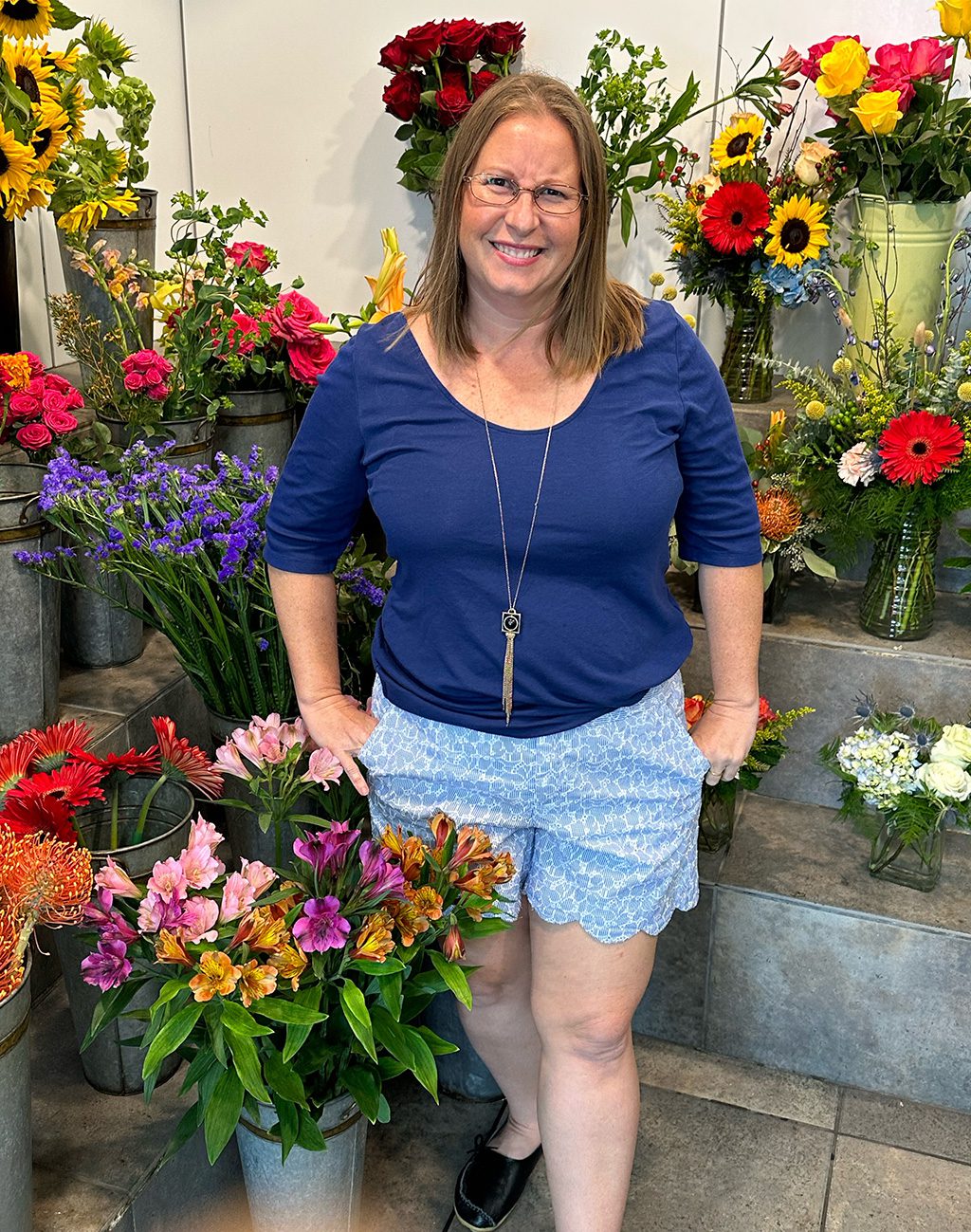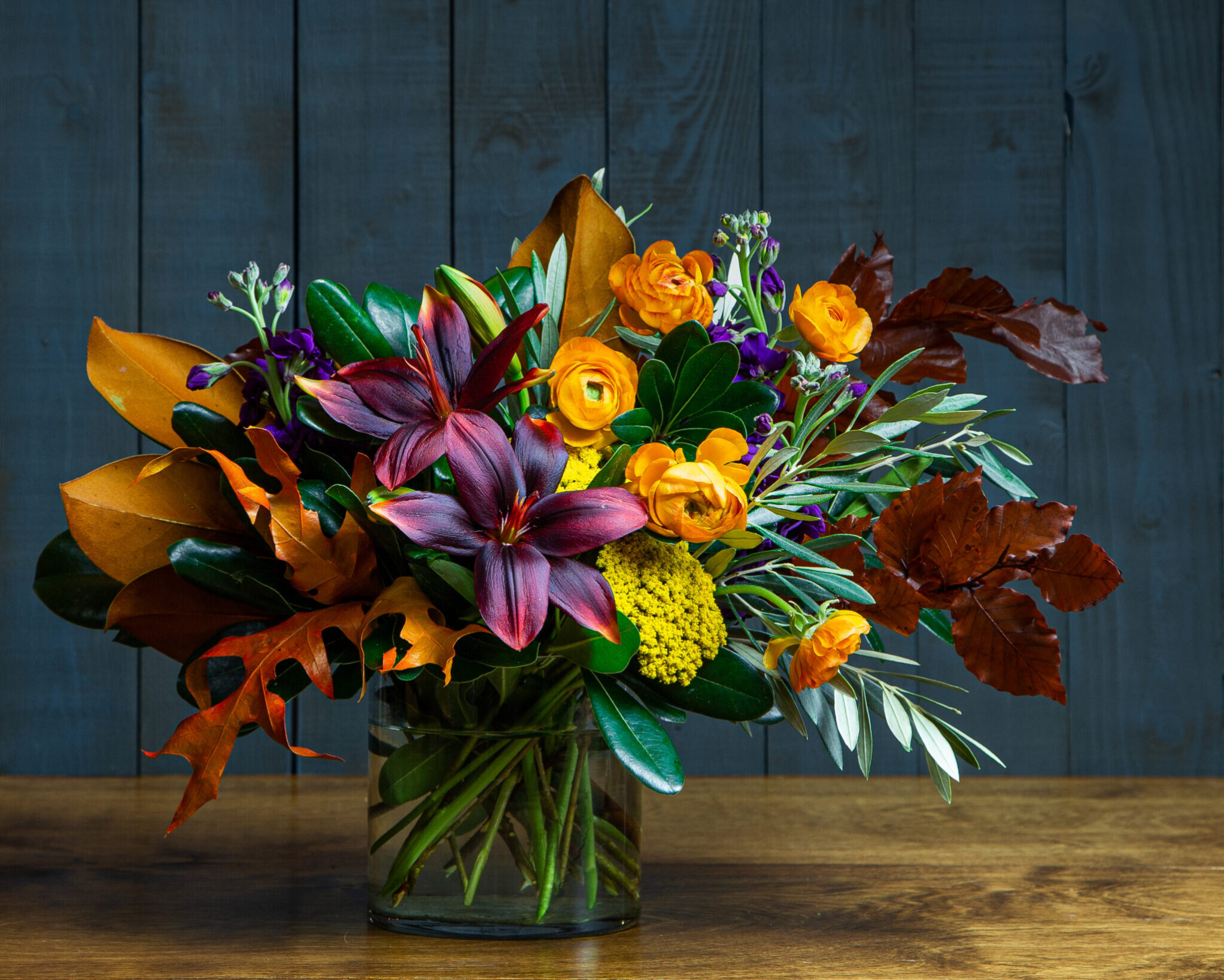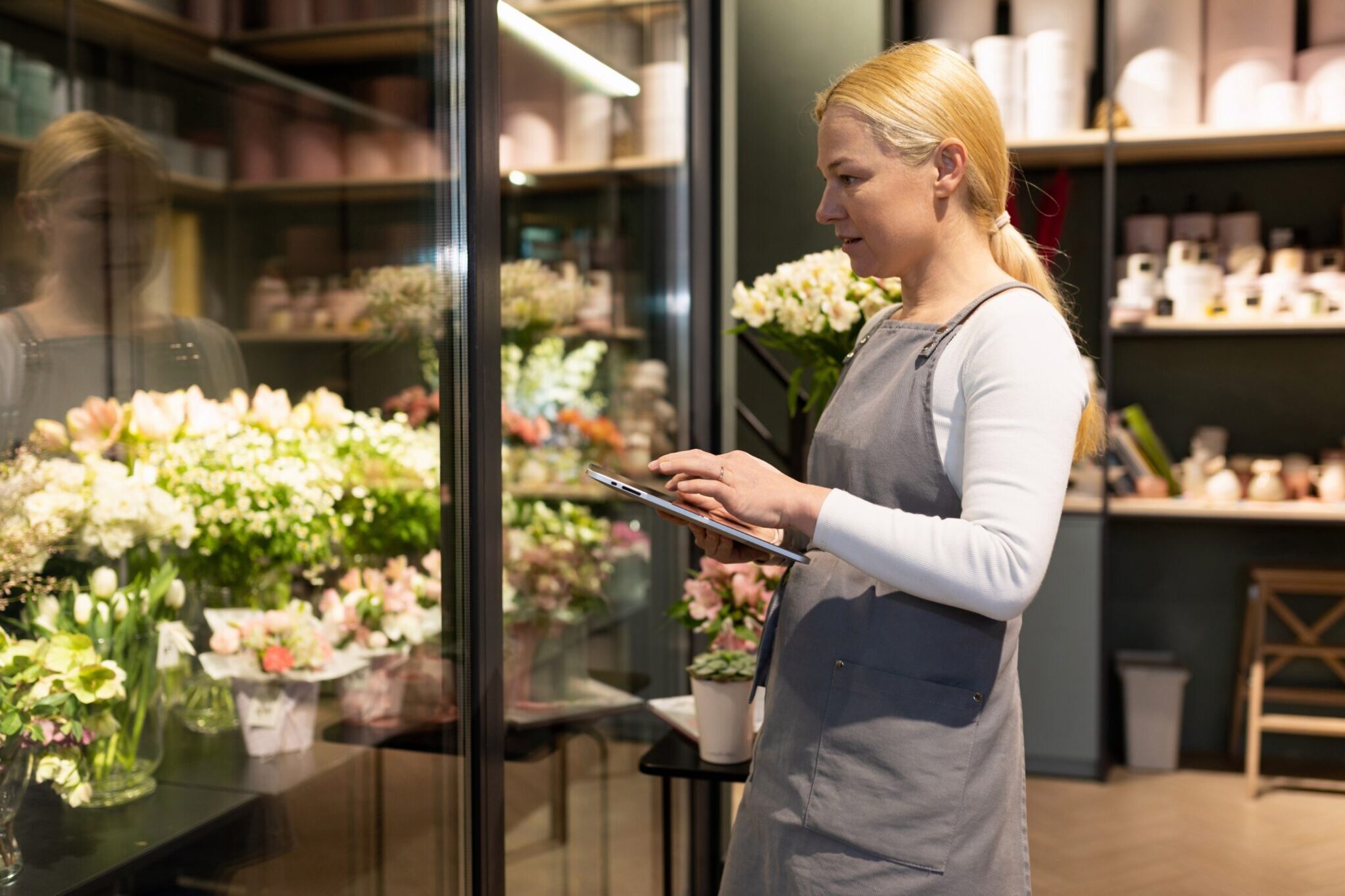
Christina Brown, owner of two flower shops in Florida, shares her strategies for work-life balance and controlling cost of goods.
When Christina Brown bought Roses Are Red florist 14 years ago in Indiatlanic, Florida, she hoped it would eliminate a long commute and provide time to start a family. “My thought process was that buying a business would give me extra time — yeah, right,” she laughs.
But with the right strategies in place, she’s been able to do just that. She averages about 10 to 15 hours of work per week on her two businesses (she later purchased a second shop, Violets In Bloom). She works mostly from home and focuses on bookkeeping, purchasing and wedding sales.
Her secret to achieving a work-life balance while keeping the shops profitable? Efficiency. Brown, who is featured in the November/December issue of Floral Management, shares some of the ways she’s adapted shop processes to maximize efficiency and propel profits.
Design Efficiencies
Brown has curated 12 to 15 original designs that rotate through the year. The designs are honed to have precise stem numbers (making ordering easy) and a limited number of insertions. “I look at how many insertions we’re doing and how fast we’re designing. I’ve found that five to six types of blooms is the sweet spot for us,” she says.
She also selects flowers carefully with speed in mind. “We use hydrangea often, because they take up a lot of real estate. We don’t use many mums at holidays to avoid having to clean stems,” she adds. Her staff loves this method of working. “They want it to be easy, pretty and to have input on it,” Brown says. “The goal is to make sure everything we do is quick — like 20 low and lush designs in an hour on holidays.”
Cost Efficiencies
By rotating a known set of designs through the seasons, Brown is able to roughly estimate how many of each design the shop will sell on a weekly basis, which really sharpens her flower order. “It’s allowed us to get our cost of goods sold dialed in really tight,” she says.
Brown attributes having cost of goods sold in order and overhead in line as vital to success. One other key? Charging appropriately for delivery. “If someone wants delivery outside standard hours, we charge for that,” she says. “Most people will take a discount if you give it, and they’ll also pay the extra—with no pushback at all—if you explain why.”
Holiday Efficiencies
The same design principles apply to holidays, with the shops offering 10 to 12 designs with limited customization available. “We don’t do multiple price points for holidays, but instead keep it simple,” Brown says. “When we’re so busy, that keeps us from mistakenly charging for a small when it’s actually a medium.”
Holiday designs hit the website for a month or two ahead of time, which allows Brown to fine-tune fresh product orders. Two weeks prior to the holiday, website offerings are narrowed significantly. By the time the holiday arrives, staff are already practiced and efficient at creating the designs.
An increase in web orders has freed up a person to design instead of answering phones. The result is more orders overall, with staff logging only 40 to 45 hours a week during holidays with little overtime.
To learn more about Brown, including how she ensures customer satisfaction and attracts wedding business, read the Talent column in the November/December issue of Floral Management.
Julie Martens Forney is a contributing writer for the Society of American Florists.





